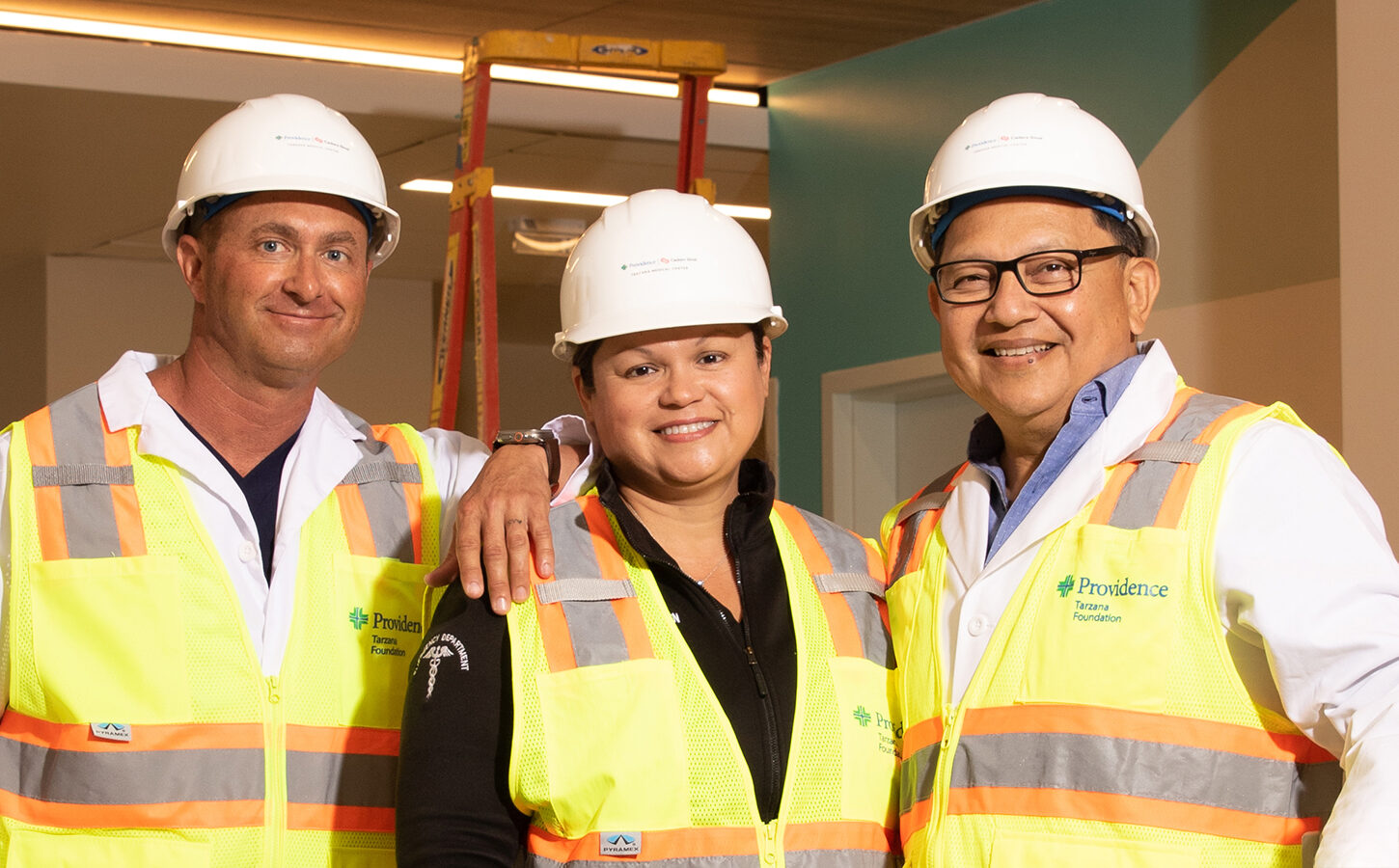Eric W. Snyder, MD

-
Medical Director, Emergency Services
Providence Cedars-Sinai Tarzana Medical Center
-
Address
18321 Clark St., Tarzana
-
Phone
818-881-0800
-
Website | Social
providence.org/lp/tarzana
IG: @providencecedars -
At left
Dr. Eric Snyder, Nurse Rose Bisellach, Dr. Ralph Baca
- Special Section
As medical director of the emergency department at Providence Cedars-Sinai Tarzana Medical Center, Eric W. Snyder, MD, works with nursing, medical and ancillary staff to ensure 24/7 emergency medical care for the community. Dr. Snyder grew up in Tarzana and was treated at Tarzana Medical Center when he was just 7 years old. He joined Providence Cedars-Sinai Tarzana Medical Center as a physician 12 years ago and has been in his current role as medical director of Emergency Services for six years.
Providence Tarzana’s emergency department has been providing lifesaving care to the community for decades. The facility is certified as a STEMI Receiving Center and accredited as a Stroke Receiving Center. With the need for these and other critical services rising dramatically each year, a larger, modernized emergency department has become essential. The hospital will open its new emergency department this year, expanding from 18 treatment bays to 33, upgrading to the latest medical equipment and state-of-the-art technology, and adding staff members.
What are your goals and dreams for 2023?
To improve the care and services we provide to our community. I want to lead a successful transition into our new facility and ensure that my staff and I work together to provide the high-quality care in the ED that we have been providing for the past 50 years in our community—while also looking at our plans to grow and expand the services and possibilities we offer in the future.
Tell us about your team.
I am blessed with an amazing administrative team that has expertise and compassion for our patients: Rose Bisellach, RN, emergency room nursing manager; Ralph Baca, MD, emergency medicine physician; Alex Ruby, MD, associate medical director; Bobak Zonnoor, MD, associate medical director; and Paula Whiteman, MD, pediatric emergency medicine physician. We cannot do anything without the support of our entire nursing staff; we all work together to provide quality care. Additionally, to make the emergency department a success, we require the support and dedication of other departments—such as environmental series, radiology and labs—to function efficiently. We are very fortunate to have an executive administration team that puts patients first. Our chief executive, Nick Lymberopoulos, has demonstrated time and time again that he cares about doing the right thing for our community.
Describe some ways you help patients improve their healthy habits.
I am a huge fan of proactive education and preventive health when it comes to tobacco, safety equipment and drugs. If I know someone smokes, I spend the limited time I have in the ED discussing strategies to quit. With children, if there is an injury from a skateboard or bicycle accident, I explain the importance of wearing a helmet—as the next injury could be catastrophic. Additionally, I speak with all kids about the dangers of drugs—fentanyl in particular.
I educated a young boy about the dangers of drugs. He had come to the ED after taking too much Xanax. I told him, “You caught a lucky break and cannot do this again. If you had taken fentanyl, you wouldn’t be waking up and I’d have to tell your parents that their son had died.” I’d like to think that had a lasting impact. There are a lot of kids who are still not aware of how dangerous fentanyl is. It’s important that we educate kids and spread this information about the dangers.
In what ways does your work make your patients’ lives easier?
I have my ED doctors call back at least two patients every shift to see how they’re doing. Not only are the patients extremely happy about this, but our doctors get to further see the impact their care provided. If there is an issue, they can ask the patient to return for a follow-up visit.
I’ve had personal connections with patients because I live in the community. Ten years ago, there was an elderly woman who cut her knee open on her back porch. She required numerous stitches and debridement. I told her to come in every day, and that her knee needed to be meticulously cared for so she didn’t get an infection. Her husband didn’t drive, and after speaking with her further I realized that she only lived two blocks away from where my parents lived. So for the next two weeks I’d stop by to dress the wound, and eventually I took out her stitches. We developed a friendship, and I stayed in touch with her and her family.
Why this career?
I was exposed to the medical field at a young age by my father, an orthopedic surgeon. I spent a lot of summers working with him in his office and thought it was so cool how great he was with his patients and how he made people better. During college, I developed a passion for emergency care while working as an EMT. While not everyone can be saved in an emergency, providing dignity and respect in their final moments is something very meaningful.




